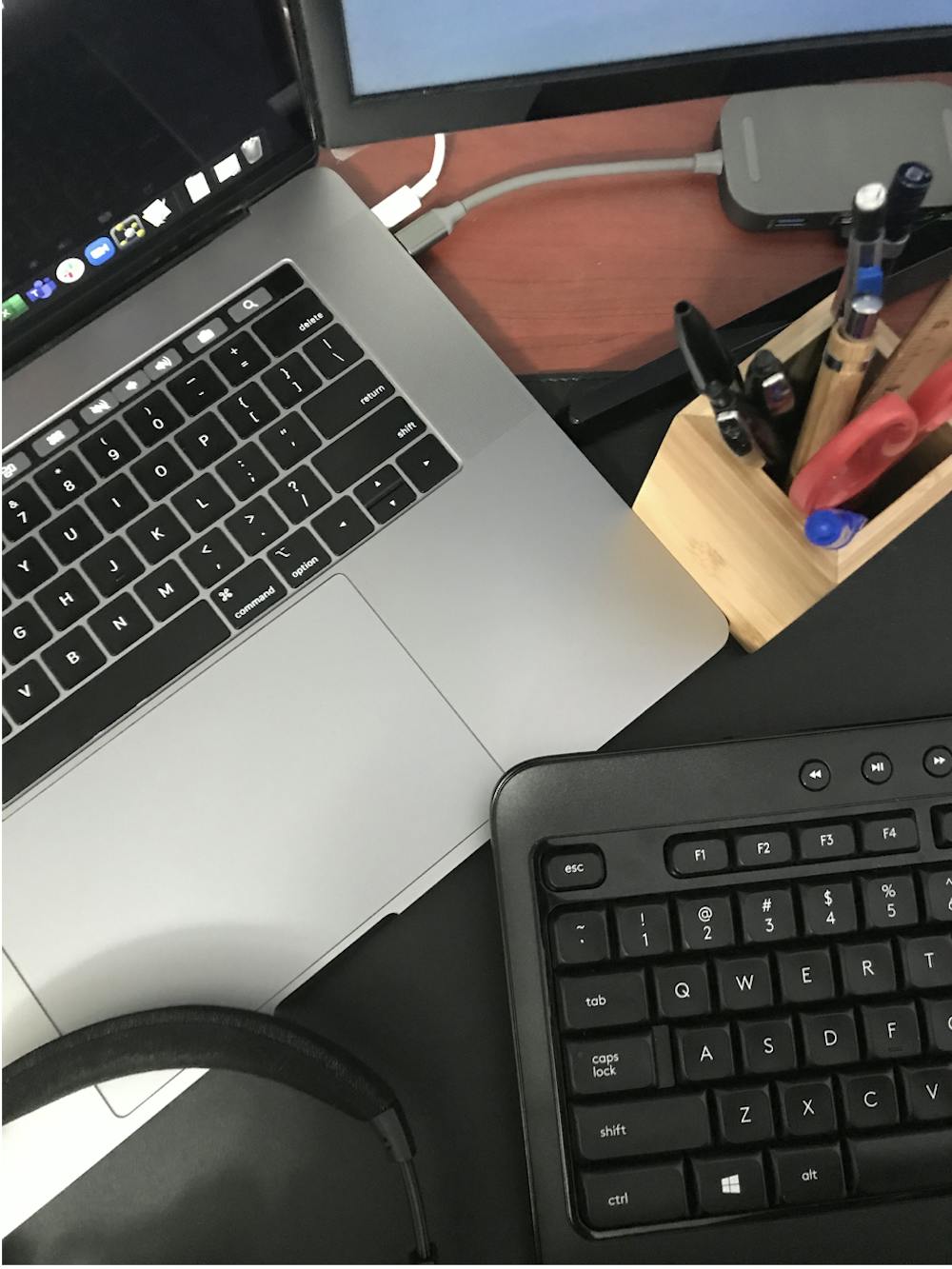
What a year it has been so far, and we still have three months to go. One thing that the added time from quarantine has allowed me to do is binge-watch pretty much every show ever made. But it also has given me the opportunity to learn about various productivity methods. As the summer days kept passing, I became more aware of how much time I could be using in a productive manner, and so I began to set up a desk.
With the start of the semester, it has become even clearer that a desk setup which maximizes productivity is key to keeping life as easy as possible in these trying times.
Before I delve into my suggestions for creating this setup, I should note that not everyone has the equivalent resources to purchase items. But we can all act on the following steps in order to add to our productivity and, more importantly, our happiness in a meaningful way.
The first step is to have a desk or table — a place that you can associate with being productive or studying. As inviting as it may seem, working while lying in bed or sprawled across the couch definitely makes it harder to focus. Simply by tricking the mind into perceiving a certain space as a productive space, we can make ourselves become more productive.
A specific desk or area that’s designated specifically for work helps us switch our minds into “work mode” and accomplish our tasks with more focus. This then frees up time that we can spend outside of that workspace as well, perhaps on more enjoyable pursuits, like maybe going back and binging just one more season of Psych.
A second step is to create a calendar or note-keeping system. This allows you to keep track of the compounding trivial and non-trivial tasks and deadlines in your lives. With online learning, it is certainly a challenge to stay on top of work, especially when you have to access several different folders on numerous websites to find your assignments, which has seemed to be the case for several of my classes, personally. Thus, creating your own calendar with all the relevant due dates and daily plans for work can make life that much easier. The brain no longer has to keep its RAM occupied with all these details.
While it may seem overwhelming to start this, there are many free options you can utilize. Personally, I like Google Calendar and Notion, as they are rather straightforward to update and edit, but it is worth your time to search other apps or methods that can achieve the level of organization you are aiming for. Ultimately, even a simple notepad can help with this, and all it takes is an hour or two to enter the entire semester’s dates on whichever app you may end up using. Of course, these calendars should be treated as a “living” document and updated when instructors or events post updates.
Also, in my experience, most professors at Hopkins are extremely eager to meet with students, discuss logistical details or just catch up. This can help any student gain a better sense of the course’s objectives and requirements and also “meet” others in the class in a productive manner. So it is important to also stay on the lookout for updates from instructors and ask the professors and TAs questions. That is the ultimate approach to confirming any details.
The third step is rather mundane, but perhaps the most important, and that is to stay conscious and aware of one’s posture. Sitting all day is certainly not natural for our bodies. While we may be accustomed to it from years of schooling and the gradual digitization of our activities, it is critical that we keep good care of our backs and bodies when possible. This means standing when possible, instead of staying seated for hours on end. A popular method seems to be to take a screen break every 20 minutes for a minute to get up and get water, look out the window or just stretch. Any of these will keep you focused during your screen time and also energized.
Of course, the best approach is to regularly exercise, which can mean a light jog around the street or going up and down the stairs. But this is not feasible for everyone and may be tough to regularly maintain, so at least ensuring our sitting posture is appropriate is critical. With sitting, we want to minimize arching our back, as that leads to forward extension of the neck. We also want our eyes to look slightly down, or straight at the screen, instead of up at it. Feet flat on the floor are also helpful to maintain this. A quick online search will also reveal the commonly recommended postures and desk setups from medical sources.
These are just some steps to maximize our productivity in these trying times and look after our health and well-being. Staying on top of our work without stressing unnecessarily can help us stay happier overall as well. We can thus continue on the path to self-actualization, especially in these challenging times. Stay safe and healthy, and start that calendar!





